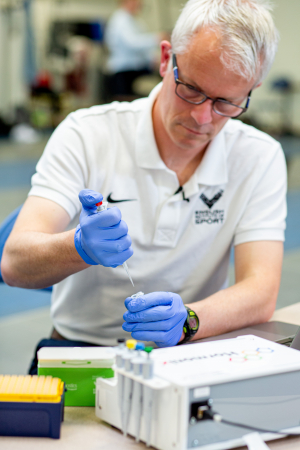 New research led by colleagues at Royal Brompton and Harefield hospitals (RBHH) has helped shed light on the link between respiratory tract infections (RTI) and athlete performance.
New research led by colleagues at Royal Brompton and Harefield hospitals (RBHH) has helped shed light on the link between respiratory tract infections (RTI) and athlete performance.
RTIs are infections in parts of the body involved in breathing, including the sinuses, throat, airways and lungs, and are a common affliction in the general population.
However, compared to the wider population, some elite athletes have been shown to be more susceptible to developing RTIs, suffering from recurrent infections throughout the year. This has been shown to impact not only their health, but their athletic ability, career progression and level of competitive achievement.
Dr James Hull, respiratory consultant at RBHH, has been working with the English Institute of Sport (EIS) for several years to try and help reduce the impact of respiratory illness on athletes preparing for the Olympic and Paralympic games.
“We identified that RTI was the biggest medical issue for athletes in the EIS. Repeated episodes of RTI can have a devastating impact on an athlete’s ability to train consistently; the key to success in competition,” said Dr Hull.
In collaboration with the EIS, Dr Anand Shah, respiratory consultant, and Dr Hull, led a research study which aimed to characterise the immune factors which make some elite athletes more susceptible to developing RTIs.
The research team compared blood samples from three groups: elite athletes more susceptible to RTIs, elite athletes not susceptible to RTIs and healthy control (non-athletes).
The results indicated that elite athletes with a higher risk of developing RTIs had fewer numbers of a particular type of white blood cell (known as T regulatory cells), an imbalance in their airway microbiome and specific differences in their metabolism, compared to the less susceptible elite athletes and healthy controls.
Dr Shah explained the importance of the study and mentioned that this “is the largest study aiming to underpin the immune factors associated with susceptibility to respiratory infection in elite athletes which is important for health and performance. We have for the first time, clearly shown the presence of a specific immune endotype in athletes susceptible to respiratory infection with a number of translationally relevant targets.”
Results from this study will make it easier for the development of targeted treatments for this group of athletes and extend the current understanding and insight into the implication of elite training and exercise on immune function.
“There is a general understanding and perception that exercise is beneficial for health, but within an elite training regimen, there can be a tipping point in some individuals where the results are detrimental.
“By understanding the relevant mechanism and immune pathways, this can improve longitudinal monitoring during training to optimise performance without detrimental effects, and in addition identify translational targets that have implication in a general population as well,” Dr Shah said.
This research was a collaboration between Royal Brompton and Harefield hospitals, the EIS, and Imperial College London.
Click here to read the published paper.
If you would like to find out more about this study or any of our other research, please contact us.
